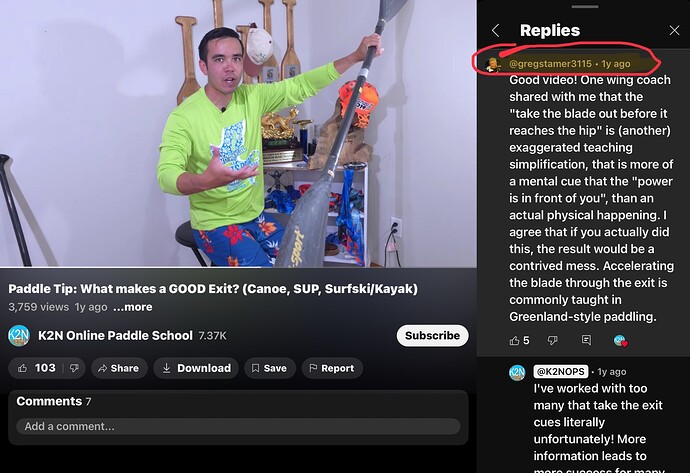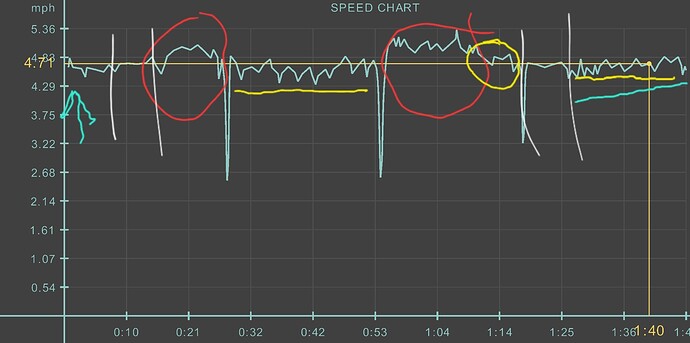I have no credentials and never claimed or implied that I have any. My statements are not directed toward dedicated athletes who are genetically gifted, highy conditioned, and committed to spend their free time taking classes studying science or spend time in a gym preparing for a race. I just think it’s, I’m not sure whether to view your perspective as bragidicious or naive to believe the average kayaker is capable of achieving the level of performance that the professional athletes achieve. Don’t you think that diminishes the dedication and effort put in by the successful athlete. Are you suggesting that if anyone follows your suggestions, they’ll be competitive.
No, I’m not challenging you or your techniques. I’m not aspiring to beat you or offer competitive techniques. I’m trying to get through to the novice in a rec boat. It shocks me that you feel threatened or insulted by my content. I looked at your marathon video . . . YOU are insulted by my portrayal of beating the water. Heh! I retract the comment. They are stroking the water at vigorous rate. The Gucci comment means no disrespect. I used that term about another members kayak to imply that it was high end, and it was viewed as a compliment. So I’ll retract that as well. You might appreciate my perspective if you understand that I paddle a 15 year old 17’6" x 24" plastic Tsunami that weighs 69 lbs. Any boat that cost more that the original price of $1,599 is a gucci boat, if it costs between $3,600 and $6,000. So call me a rube hillbillie.
I’m no athlete at 74 yrs old. I’m 6"1’ and weigh 235 lbs. My left rotator cuff is non-functional with two permanently detatched tendons out of the four that normally keep the shoulder joint in the socket. The joint has advanced sepsis induced porosity (arthritis). Technically, I shouldn’t be able to kayak without pain in both shoulder. During the past three seasons, I only found time to get out on the water 20 times per season. I’ve never attended a formal training course for kayaking. My high avg speed over 21.65 miles in a 145 Tsunami was 4.99 mph, and over 38.75 miles in a 175 Tsunami, I averaged 4.65 mph with 1/4 of the trip against about a 3 mph tidal ebb.
Despite the passage of 15 years, physical debilities, and limited time to access the water, I managed to equal my best times from before I turned 60 yrs old. My free time since I retired at 55 yrs old was mainly devoted to working part-time for a friend building custom furniture and building an addition to my current house.
I’ve posted my trip charts elsewhere. I’m not blowing smoke on anyone or claiming any accolades. I’m simply thrilled that I could managed to equal my earlier record. It took three years to claw back to that goal after starting a painful 2.9 mph avg on the first trip in July 21, following the recovery from my shoulder injury.
I’ve only been out once this year, and that was to test my new 260 cm Kalliste which is intended to.replace my 250 cm model. The trip results actially shocked me, because I tylically start the season at around 4.1 avg mph.
What I have learned is how to hit a target average speed and bracket the speed within a +/- range of a few tenth of a mph, whether going into wind and tides or with an assist.
I don’t mean this as a slight to your methods, but I don’t have the stamina, physical ability, or desire to invest the time or commitment to model your superior technique. This is as good as I get, but I hope to improve my average by another .25 mph if I can find time to get back on the water.
I’m a ham and egg kayaker. if I can help a novice get to my level, I’ll gladly hand them off to you.



